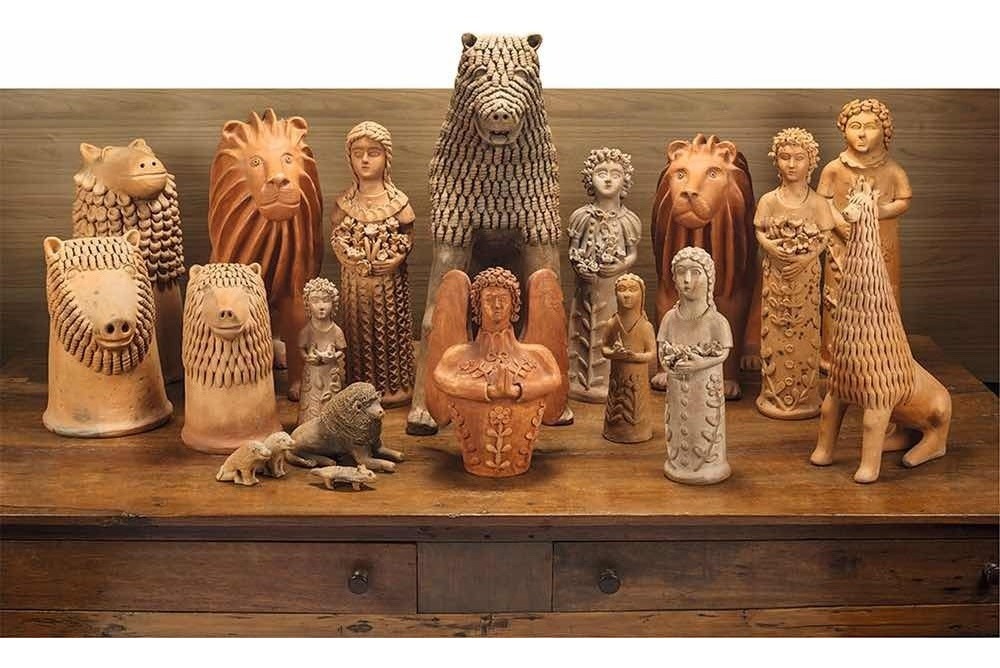Tracunhaém: The capital of ceramics in Pernambuco
Tracunhaém is a municipality in the state of Pernambuco, known for its rich clay handicrafts, especially its handmade ceramics.
Located in the Agreste region of the state, the town has a strong tradition of handicraft production that goes back several generations.
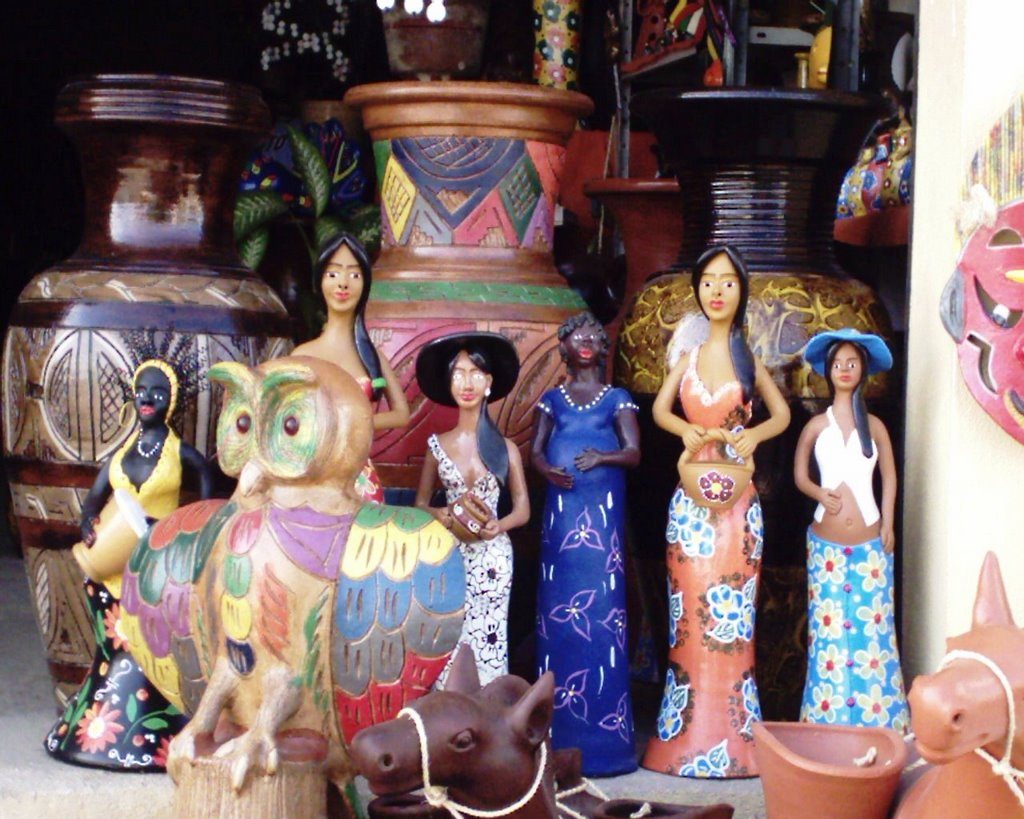
Video – Tracunhaém is the “Capital of Ceramics

1. Characteristics of Tracunhaém handicrafts
1.1 Techniques and processes
- Hand modelling: The artisans of Tracunhaém use traditional hand modelling techniques to create their pieces. The clay is shaped by hand without the use of industrial moulds.
- Firing in traditional kilns: The pieces are fired in wood-fired kilns, giving the ceramics a rustic and characteristic finish.
1.2 Types of pieces
- Figures and Statuettes: Figures of saints, animals and folklore characters are common, as are representations of local culture.
- Utilitarian and decorative: Utility items such as vases, pots and bowls are also produced.
1.3 Decoration and design
- Painting and engraving: Pieces are often decorated with colourful paintings and intricate designs, reflecting the rich cultural and artistic tradition of the region.
- Regional Themes: Many of the designs and shapes incorporate elements of local culture, such as scenes from everyday life and symbols from nature.
1.4 Cultural and economic impact
- Preservation of Tradition: Tracunhaém’s pottery is an important way of preserving and passing on local culture and traditions.
- Tourism and Economy: Ceramic production is an important source of income for many residents and attracts tourists interested in buying authentic pieces and learning about the craft process.
1.5 Visits and markets
- Fairs and Exhibitions: Tracunhaém often holds fairs and events where artisans can exhibit and sell their creations, promoting local handicrafts.
- Shops and studios: There are several shops and studios in the city where visitors can see and buy ceramics directly from the artisans.
2. Tracunhaém: The city of pottery
Nearly 50 percent of the population survives, directly or indirectly, by transforming clay into utilitarian objects or works of art. The anonymous workers work in the city’s potteries or are famous artisans, some even recognised outside Brazil.
The city has been awarded the title of “Capital of Ceramic Crafts” by the Legislative Assembly of Pernambuco, and stands out for its production of saints, animals and utilitarian pieces, using clay as the raw material.
The figurative and decorative art of clay is a trademark of Tracunhaém, creating figures inspired by popular culture and religious beliefs.
In addition, the cultural heritage is passed down from generation to generation, with many artisans learning the craft from childhood.
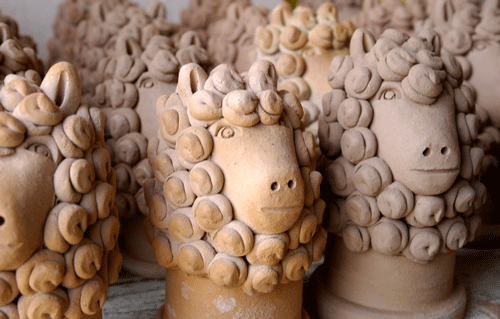
3. Clay Crafts: A cultural practice
Clay art is an ancient activity, dating back more than 3,000 years before Christ, and is a representative practice of Brazilian popular culture, inherited from the Indians.
The Indians, for example, created toys and household items such as bowls and troughs, using their creativity and inspiration from nature.
Clay artisans, known as anonymous artists, are a vital force in the production of utilitarian and ornamental ceramics throughout Brazil, especially in Pernambuco.
Cities such as Caruaru and Goiana also excel in this practice, with Caruaru being the home of the famous Mestre Vitalino.
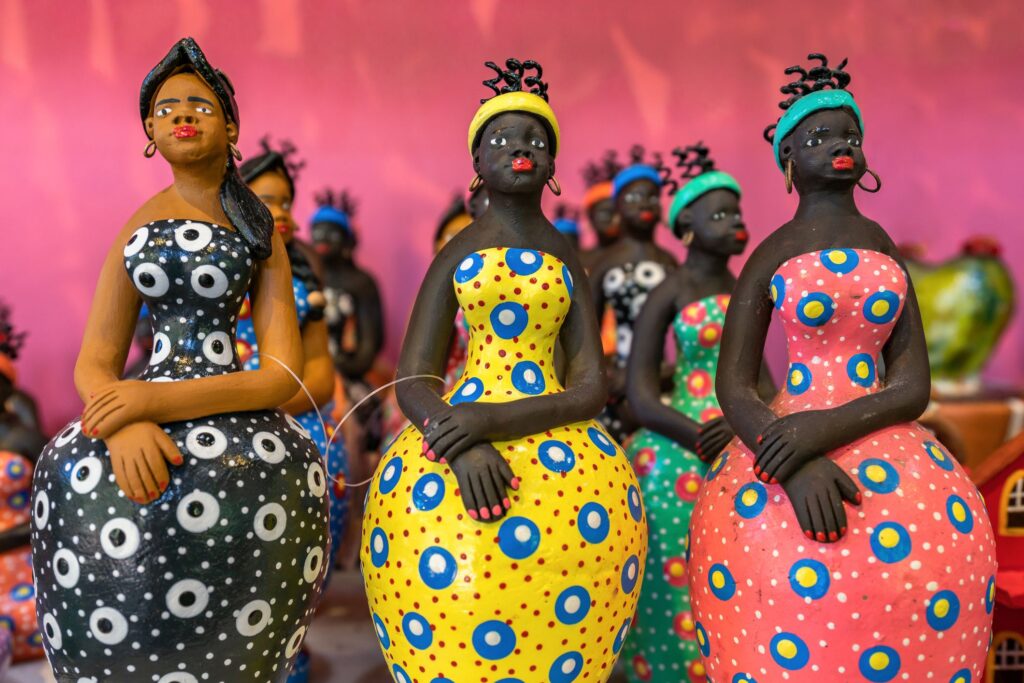
4. The art of clay modelling
Clay modelling is a symbolic and playful expression that dates back to the dawn of mankind. Throughout history, ceramics have evolved with the improvement of techniques and the addition of natural pigments, expanding the artistic possibilities.
The artists of Tracunhaém use clay as their main raw material, creating pieces that reflect local life and culture.
Clay is a generic term that includes different mixtures of clays, each with different characteristics.
5. How to model clay
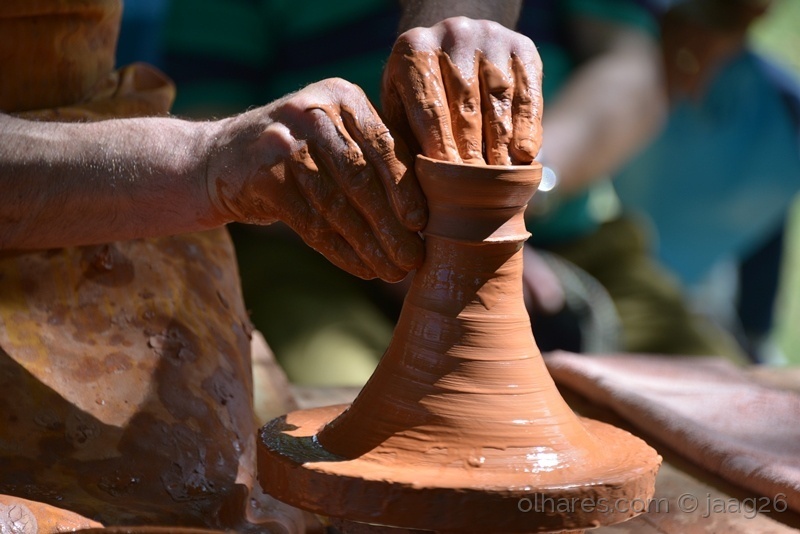
Arte de Modelar o Barro ou Argila em Tracunhaém
Working with clay is an accessible and creative practice. Here are some basic techniques for modelling it:
5.1 Forming clay with your hands
- Prepare the clay: Make sure the clay is soft and free of bubbles.
- Classic method: Form the clay with your fingers to create simple shapes.
- Coil technique: Use small rolls of clay to make objects.
- Cut the clay into flat shapes to make boxes or other objects.
- Use an extruder: Make “threads” or “snakes” with a clay extruder.





5.2 Using the wheel
- Prepare the lathe: Set up the equipment to shape the clay.
- Centre the clay: Place the clay in the centre of the wheel and adjust as necessary.
- Mold the piece: Use your hands to shape the clay into the desired form.







Tracunhaém is the “capital of ceramics”.
Publicações Relacionadas
Why go to the Brazilian Northeast?
Biografia de Jorge Amado
Goiana: A Historical Treasure in Pernambuco
The influence of Arab architecture on the buildings of Pernambuco
History of the Brazilian Northeast
Tropical flowers are grown on a large scale in northeastern Brazil
Influences and main dishes of northeastern cuisine
Music and Rhythms of the Brazilian Northeast
Cultural Aspects of the Northeast Region of Brazil
Route of the Sugar Mills and Maracatus in Pernambuco
Rapadura continues in the daily life of the northeasterner to this day
History of Carnival in Northeast Brazil
History and evolution of the Trio Elétrico
Northeastern architecture marked by typical features of colonial structures
Historic Towns in the Northeast: Explore the Past
The cities of the Zona da Mata were born around the large sugar cane mills
José Américo de Almeida left Paraíba to revolutionize northeastern literature
History of the introduction of Portuguese tiles in Brazil
This post is also on:
![]() Português
Português ![]() English
English ![]() Deutsch
Deutsch ![]() Español
Español ![]() Français
Français
